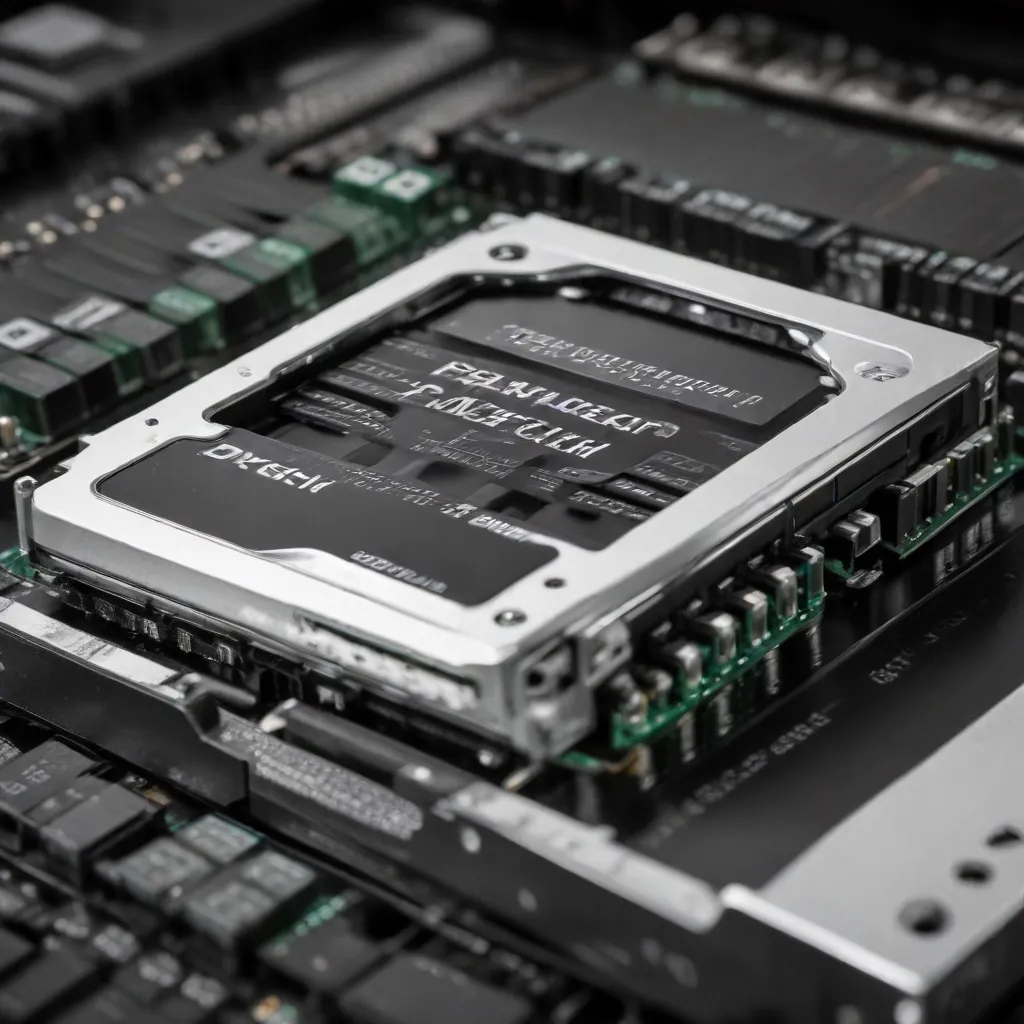
As an experienced IT professional, I’ve seen firsthand how optimizing disk caching and input/output (I/O) performance can make a significant difference in the overall storage efficiency of a computer system. In this comprehensive guide, we’ll explore the various hardware and software components involved, discuss best practices for disk optimization, and provide practical tips to help you get the most out of your PC’s storage capabilities.
Computer Hardware
Disk Drives
At the heart of any storage system are the physical disk drives. There are two primary types of disk drives you’ll encounter in modern PCs: Hard Disk Drives (HDDs) and Solid-State Drives (SSDs).
HDDs use magnetic disks to store data, while SSDs leverage semiconductor-based flash memory. Each technology has its own unique characteristics that impact performance and efficiency.
HDDs generally offer larger storage capacities at a lower cost per gigabyte, but they are susceptible to mechanical failures and have slower read/write speeds compared to SSDs. SSDs, on the other hand, are more reliable, faster, and consume less power, but they come at a higher price per GB of storage.
Storage Technologies
Magnetic storage, the foundation of HDDs, has been around for decades and continues to evolve. Newer technologies like perpendicular magnetic recording and heat-assisted magnetic recording have helped increase the data density and capacity of HDDs over time.
Semiconductor storage, the basis for SSDs, has also progressed rapidly. The transition from NAND to 3D NAND flash memory has enabled higher capacities and improved performance in solid-state drives.
Understanding the underlying storage technologies can help you make informed decisions when choosing the right disk drives for your specific needs and workloads.
System Performance
Disk Caching
Disk caching is a crucial aspect of storage efficiency, as it can significantly impact the overall performance of your system. There are two main types of disk caching:
Read Caching: When data is requested from the disk, the operating system stores a copy of it in the system’s RAM. Subsequent requests for the same data can be served from the cache, dramatically reducing access times.
Write Caching: Before data is written to the disk, it is first stored in the system’s RAM. This allows the write operation to complete quickly, while the data is gradually flushed to the physical storage in the background.
Properly configuring read and write caching can provide a noticeable boost in system responsiveness and throughput.
Input/Output (I/O) Performance
The efficiency of your system’s I/O operations also plays a significant role in storage performance. There are two main types of I/O:
Sequential I/O: This occurs when data is read or written in a continuous, linear fashion, such as when streaming media or accessing large files. Sequential I/O generally benefits from higher disk transfer rates and can take advantage of caching.
Random I/O: This happens when data is accessed in a scattered, non-linear manner, as is common with database operations, software installation, or loading many small files. Random I/O can be more challenging to optimize, as it often involves more seek time and less efficient use of the disk’s mechanical components.
Balancing and optimizing both sequential and random I/O performance is crucial for overall storage efficiency.
Storage Efficiency
Disk Optimization
To ensure optimal storage efficiency, it’s essential to keep your disk drives well-maintained and properly configured. This includes tasks like:
Partitioning: Dividing a disk into logical partitions can help improve data organization and access times. Proper partitioning can also facilitate the use of different file systems or storage tiers.
Defragmentation: Over time, as files are added, modified, and deleted, the data on a disk can become fragmented, leading to slower access times. Regularly defragmenting your disk drives can help consolidate and optimize data placement.
Storage Management
Advanced storage management techniques can further enhance efficiency and performance:
Tiered Storage: By placing frequently accessed data on faster storage media (such as SSDs) and less active data on slower, higher-capacity drives (like HDDs), you can create a tiered storage system that balances performance and cost.
Automated Tiering: Some storage solutions, including operating system features and third-party software, can automatically migrate data between different storage tiers based on access patterns and usage, ensuring that hot data is always on the fastest available media.
Implementing these disk optimization and storage management strategies can help you get the most out of your PC’s storage capabilities, improving overall system performance and efficiency.
Operating System Considerations
File Systems
The choice of file system can also impact storage efficiency. On Windows, the NTFS file system is the most common, offering features like journaling, encryption, and advanced security. On Linux, the ext4 file system is a widely-used option that provides improved reliability and performance compared to older ext3.
Selecting the appropriate file system and configuring it correctly can help unlock the full potential of your storage hardware.
Memory Management
Effective memory management by the operating system is crucial for storage efficiency. Mechanisms like virtual memory and page caching can help bridge the performance gap between RAM and disk storage, ensuring that frequently accessed data is readily available in memory.
By understanding how your operating system manages memory and storage, you can fine-tune settings to optimize for your specific workloads and usage patterns.
In conclusion, optimizing disk caching, I/O performance, and overall storage efficiency requires a holistic understanding of the underlying hardware, software, and operating system components. By implementing the strategies and techniques discussed in this article, you can unlock the full potential of your PC’s storage capabilities, leading to improved system responsiveness, reduced latency, and enhanced productivity. For more IT-related tips and insights, be sure to check out IT Fix.












